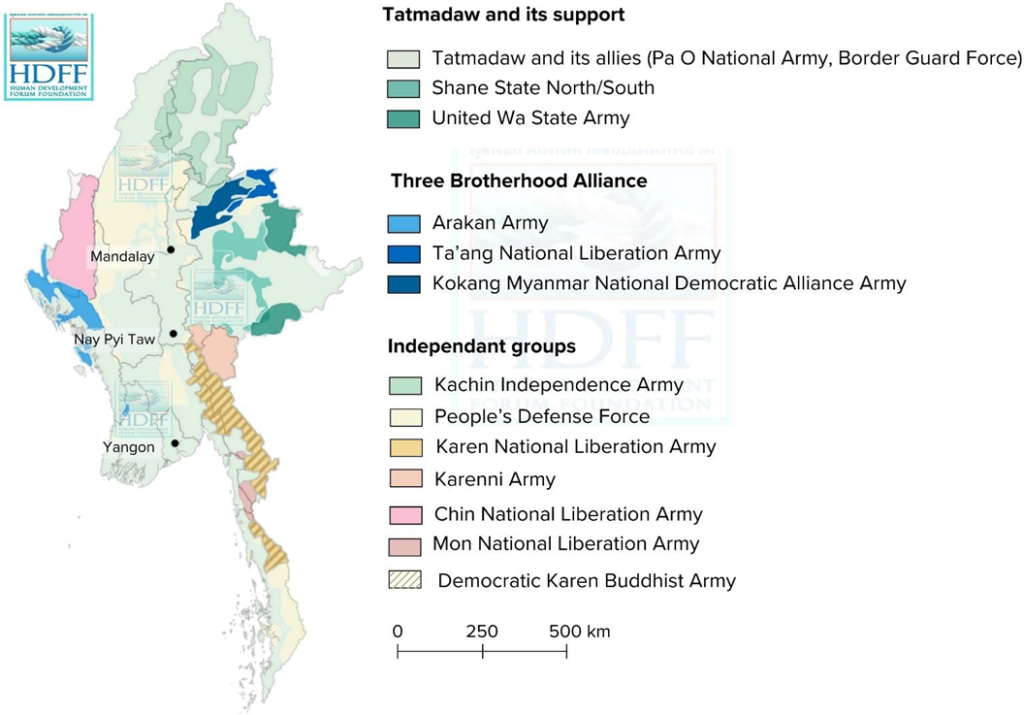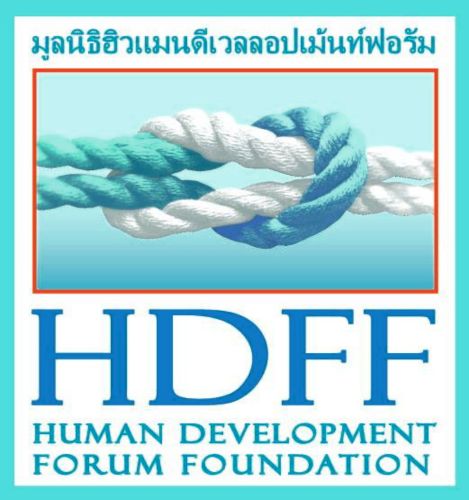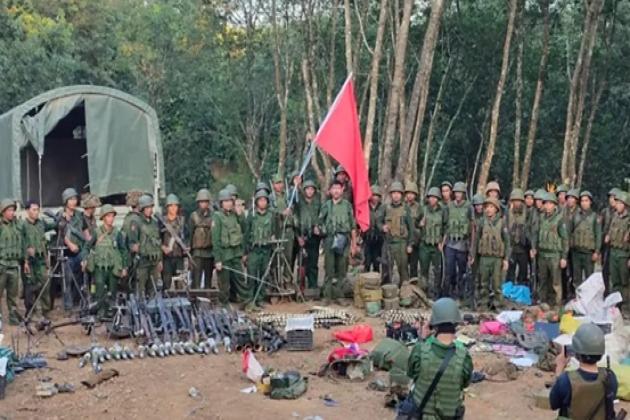
This map illustrates the armed groups in Myanmar and their locations throughout the whole country
- The same color in the picture indicates their allies.
- The People’s Defense Force allies with almost every other ethnic armed group, except for SSA (North and South), UWSA, and PNA.
1. Kachin Independence Army
- Armed wing of the Kachin Independence Organization
- Part of the northern alliance
- Support AA (Arakan Army)
- Resides mainly in the Kachin and Northern Shan State
2. Arakan Army
- Active in Chin State, Kachin State, Rakhine State, Shan State, Bangladesh–Myanmar border, and India–Myanmar border
- Serves as the armed wing of the United League of Arakan and is part of the Three Brotherhood Alliance, Northern Alliance
3. Kokang Myanmar National Democratic Alliance Army
- Operates in the Kokang region
- Broke its ceasefire agreement following the coup and resumed fighting against the government.
- A member of the three-brotherhood alliance with the Arakan Army and Ta’ang National Liberation Army.
- Part of the northern alliance
- On January 5, 2024, the MNDAA seized full control of Laukkai, the capital of Kokang, after defeating Tatmadaw forces.
4. Ta’ang National Liberation Army
- Governs the Pa laung (Self-Administrative Zone)
- Part of the three brother-hood alliance
- An anti-junta alliance operating primarily in Rakhine State and northern Shan State.
- Part of the northern alliance
5. United Wa State Army
- Operates in Shan State and is regarded as Myanmar’s most powerful and well-armed army, boasting around 30000 troops equipped with modern weapons.
- The UWSA governs the Wa Self-Administered Division (Wa State) and maintains a de facto ceasefire with the government
- It has frequently allied with the Tatmadaw to combat Shan nationalist militia groups, including the Shan State Army – South.
- Unlike other armed groups, the UWSA is not pursuing independence or secession
- It engages in extensive business and trade with China and earns revenue from drug and weapon production.
- It has acquired surface-to-air missiles from China to counter the Tatmadaw’s air superiority, a critical asset for insurgent groups.
6. Shan State Army (North)
- Operates in Shan State and serves as the armed wing of the Shan State Progress Party (SSPP).
- Allied with the Tatmadaw, it declared a truce with the Shan State Army – South on November 30, 2023, claiming to be planning to unite the two armies in the future.
7. Shan State Army (South)
- Operates in Shan State along the Myanmar–Thailand border and stands as one of the largest insurgent groups in Myanmar.
- Serve as the armed wing of the Restoration Council of Shan State (RCSS)
- A part of the Shan State Congress and maintains alliances or ceasefire arrangements with the Tatmadaw.
- Currently not aligned with the resistance, it is led by Lieutenant General Yawd Serk and is headquartered in Loi Tai Leng.
- On February 19, 2024, the RCSS implemented mandatory conscription for all citizens aged 18–45 residing in its territory, obliging them to serve a minimum of six years in the SSA-S, with severe penalties for refusal.
8. Myanmar’s Tatmadaw
- The most powerful and strongest arsenal and ammunition are mainly in Yangon and Nay Pyi Taw, which are the economic and capital cities of Myanmar.
- So-called legitimate Army compared with other ethnic groups.
- Along with its affiliated political entity, the Union Solidarity and Development Party (USDP), and the ruling junta known as The State Administration Council (SAC), the Tatmadaw
The most powerful and strongest arsenal and ammunition are mainly in Yangon and Nay Pyi Taw, which emerged as a combatant following the 2021 coup, led by Commander-in-Chief of Defence Services Min Aung Hlaing.
9. People’s Defence Force
- Serves as the military wing of the National Unity Government (NUG) and comprises of roughly 65,000 troops.
- Resides in the whole country as the representatives of their own states but mainly and the strongest is in Sagaing Region.
- It allies with other ethnic groups except SSA (North and South), UWSA and PNA.
| – Consists of several local resistance groups and other newly-formed anti-junta ethnic militias, such as the Karenni People’s Defence Force and the Chinland Defence Force |
10. Chin National Army
- Active in Chin State and serving as the armed wing of the Chin National Front.
- Joined the CRPH/NUG after the 2021 coup de’tat.
11. Karenni Army
- Operates in Kayah State, serving as the armed wing of the Karenni National Progressive Party
- The group resumed hostilities following the 2021 coup.
12. Karen National Liberation Army
- Serves as the armed wing of the Karen National Union.
- Resides mainly in Kayin State and, also in Kayah State and Taninthayi Region
- Cooperate mainly as the member of United Nationalities Federal Council (UNCF).
- The first ethnic group in history to push for a federal government following Myanmar’s independence
- After the 2021 coup, it broke its ceasefire agreement, shifting its goal from independence to establishing a federal, democratic system in Burma.
- Democratic Karen Buddhist Army
- An insurgent group of Buddhist soldiers and officers in Myanmar that split from the predominantly Christian-led Karen National Liberation Army (KNLA).
- Shortly after splitting from the KNLA in December 1994, the DKBA signed a ceasefire agreement with the government of Myanmar in exchange for military and financial assistance
- In 2010, DKBA soldiers split away from the organisation and renamed themselves the Democratic Karen Benevolent Army – Brigade 5 (DKBA-5), which was led by Bo Na Khan Mhway (Saw Lah Pwe)
14. Border Guard Force (Karen)
- One of the subdivisions of the Tatmadaw, operating under Regional Military Commands and composed of former insurgent groups from various ethnic backgrounds.
15. Mon National Liberation Army (Anti-Military Dictatorship)
- Formed in 2024 after splitting from the MNLA. It disregarded the ceasefire and joined the anti-junta forces.
16. Pa-O National Army
- Operates in Shan State and allied with the Tatmadaw.
- It serves as the armed wing of the Pa-O National Organisation and is responsible for safeguarding the PNO-administered Pa-O Self-Administered Zone, comprising of Hopong, Hsi Hseng, and Pinlaung townships in southern Shan State.
- Since the 2021 coup, the PNA has actively recruited for the Tatmadaw.
17. Pa-O National Liberation Army
- Armed Wing of the Pa O National Liberation Army and resides mainly in Shan state and Thailand-Myanmar Border.
- Aligned with the resistance against the Tatmadaw.
- Revoked its ceasefire and began coordinating with local People’s Defense Forces (PDF) and the Karenni Nationalities Defense Force (KNDF), launching attacks against the junta and its aligned forces.


Comments are closed